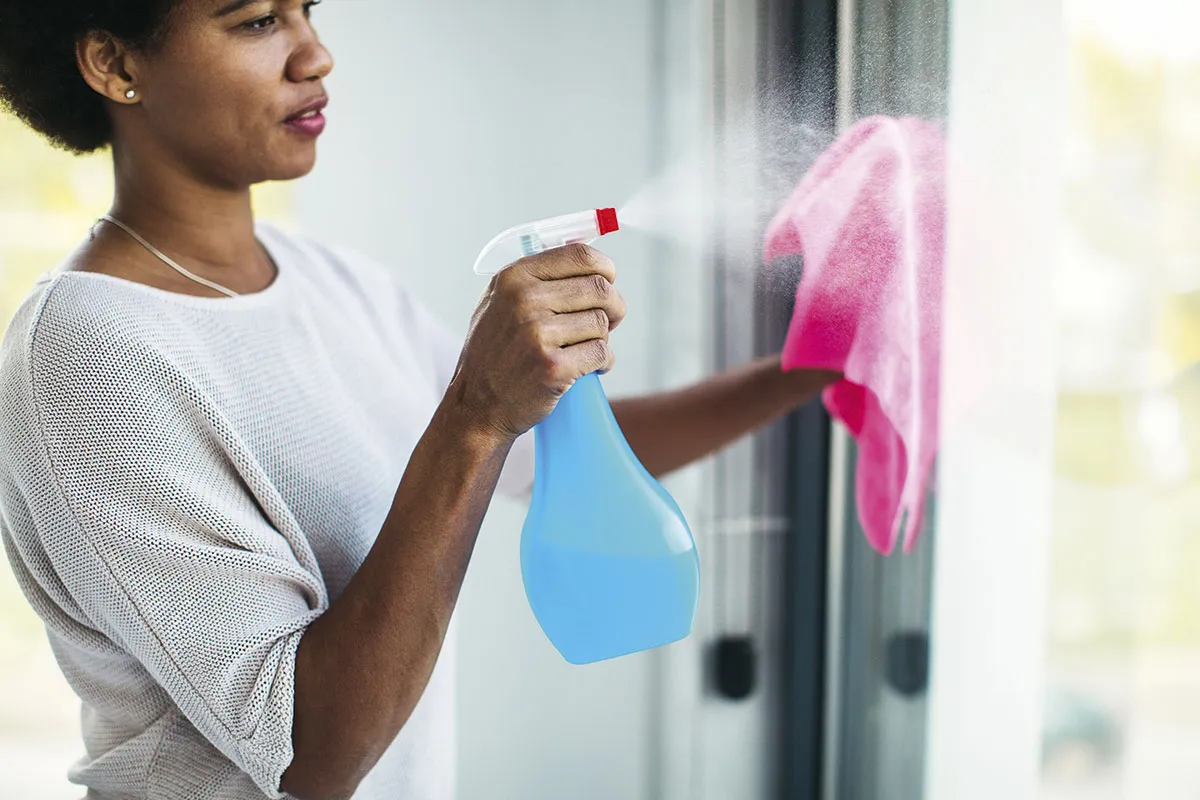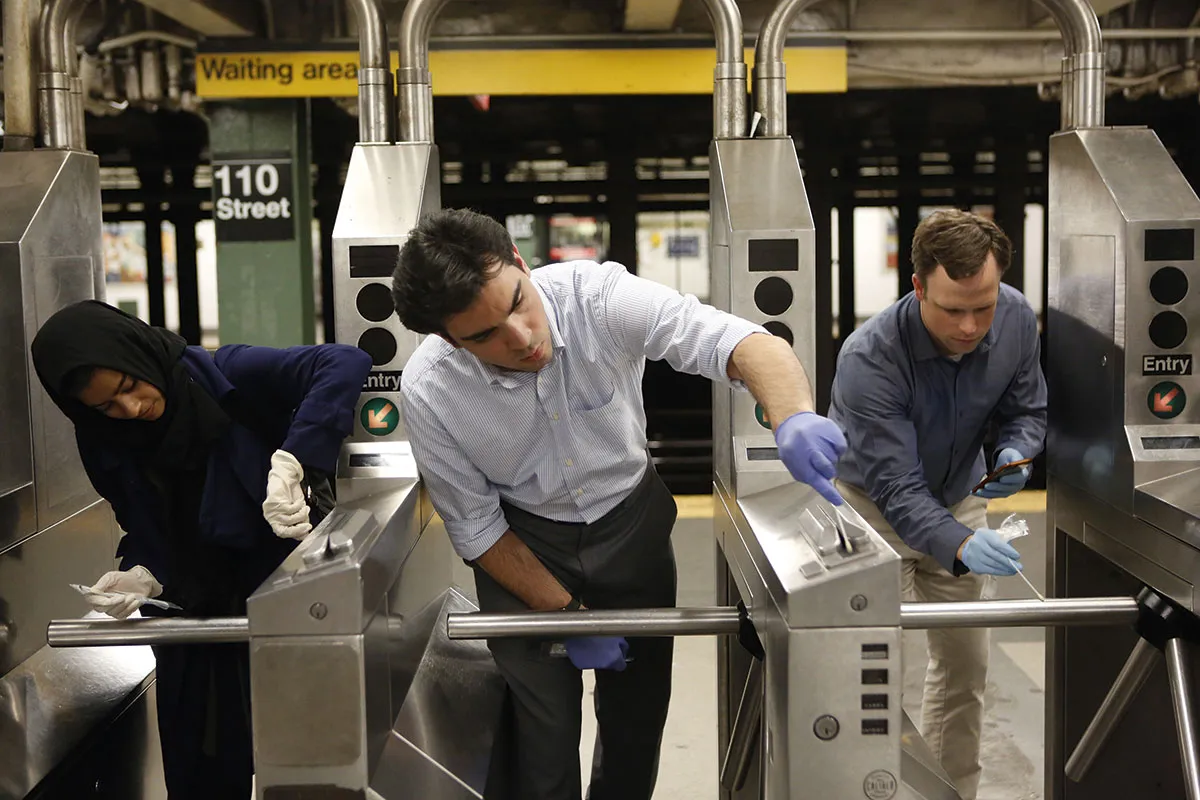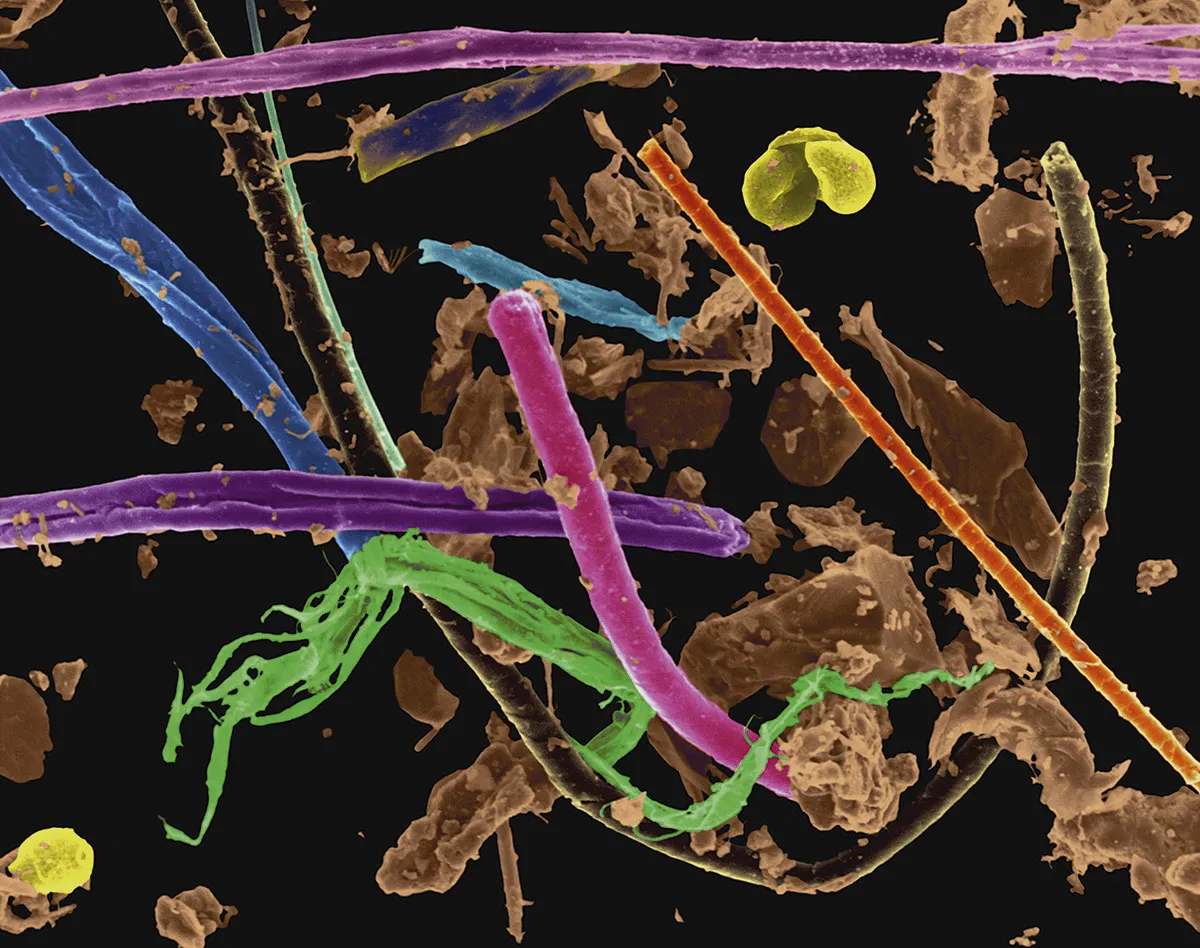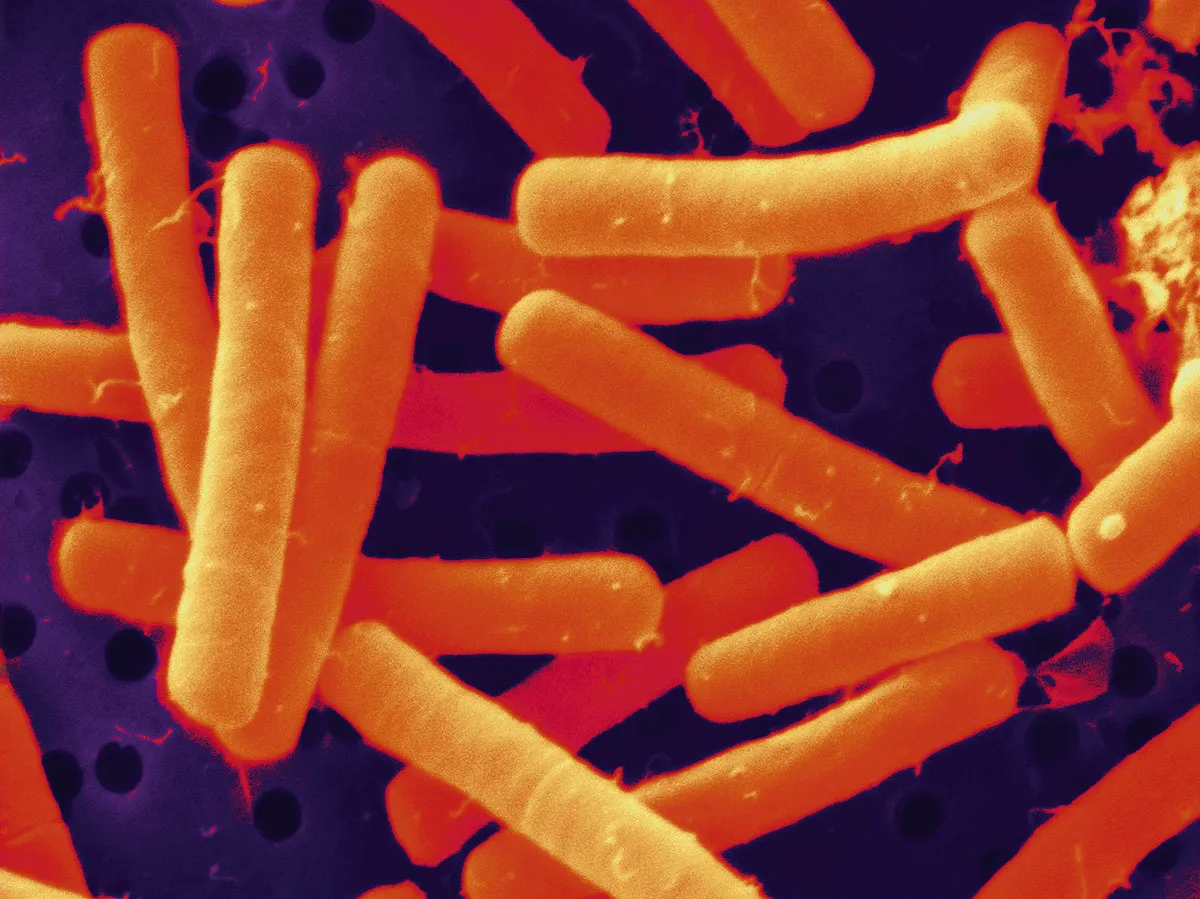For generations, we’ve dealt with the bacteria and other microorganisms we share our homes with in one way: wipe them out. By pouring or spraying something onto household surfaces we keep germs away and stay healthy. It’s a tactic that many of us have ramped up during the pandemic to keep the SARS-CoV-2 virus at bay.
But there’s growing evidence that we need to take an entirely different approach to these microbes. While there’s no doubt that some of the microorganisms that live among us are harmful (and nobody is suggesting that cleaning isn’t a good way to keep the likes of SARS-CoV-2 out of our homes) there’s growing evidence that many of them are actually doing us good.
The thing is, we’ve been unwittingly meddling with the microbes we share our living rooms, kitchens and outdoor spaces with, creating hostile environments for those beneficial bugs. It means that while the idea of using probiotics in our bodies has been around for a while, soon we might be giving our homes and our cities the probiotic treatment too.
Research to characterise the invisible microbial soup that we live in has taken off over the past decade. In May 2021, the results of a giant research project that involved 900 scientists and volunteers taking swabs of the microbes living on ticket machines, railings and seats in subways, buses and trams in 60 cities around the world was published. This audit of urban microbial life found no fewer than 10,928 viruses and 1,302 bacteria that had not been identified before.
The research, led by Prof Christopher Mason at Weill Cornell Medicine, in the US, showed that every city has its own unique microbial mix. So whether you live in London, Hong Kong or Paris, you’re exposed to a different blend of microbes.
Before this came the Wild Life of Our Homes project that was run by North Carolina State University, which showed that we each share our homes with 9,000 species of microbes. Other research has identified the microbes that live in everything from university dining halls to shopping centres.

This explosion in microbial exploration has been fuelled by advances in rapid gene sequencing as well as computing power. The global city microbial count required two supercomputers in Pittsburgh to crunch through the masses of data – eight trillion gene bases from microbes gathered via swabs.
“In the field of microbiology, we’re doing the equivalent of explorers going out and seeing what plants live on different continents,” says Noah Fierer, a microbiology professor at the University Of Colorado Boulder, who was involved with the Wild Life Of Our Homes project.
“We’re just starting to get a handle on which types of microbes we’re exposed to on a daily basis. These could be in our food, in the air or in the water we drink. These could just be on surfaces you touch and then you chew your fingernails and put your fingers to your lips and so forth. But there’s a lot of work that needs to go from what you’re exposed to, all the way to how it affects your health.”
The thing is, while we’ve become very good at identifying the bacteria, viruses and fungi that make us sick, what we’re less good at, Fierer explains, is figuring out which ones are doing us good, because it’s not straightforward.
“It could be that if you’re exposed to particular microbes when you’re two years old, it trains your immune system so that when you’re 40, you don’t have allergies. That’s hard to figure out. Or it could be dose-dependent. For example, if you’re exposed to some of them, it trains your immune system in a good way, but if you’re exposed to too many, it could be bad. Or it could be individual categories or combinations of microbes.”

There is, however, tantalising evidence that many microbes are quietly doing us a lot of good. While research into the health-promoting effects of specific microbes is still in its infancy, certain species of bacteria have been linked with improvements in our physical and mental health.
Cities are diverse environments for microbes. “There are plants, dust, concrete, wood, glass, plastic and different types of bitumen versus stone,” says Prof Jack Gilbert, a microbial ecologist at the University Of California San Diego. Each of these represents a different environment, attracting different microbes. “[The city is] also quite inhospitable – the only place where microbes are going to thrive is where there’s lots of nutrients and moisture.”
The species of microbes that live on our pavements and park benches are very different to those that we’ve been exposed to for most of human history, which was spent in rural areas. “What we’ve experienced for most of our evolutionary history – so most of our time on this planet – is soil microbes and microbes that live on leaf surfaces, fruit and animals,” says Jacob Mills, a PhD student at the University of Adelaide, Australia.
It’s the microbes that live in soil and on plants that are most likely to be doing us good, training our immune systems as well as helping us to digest our food, control our weight and be mentally healthy.

It’s a similar picture when it comes to microbes inside a building – whether it’s our homes or our offices. “It’s essentially a very cold, inhospitable environment. It’s like taking a rainforest and throwing it in the Sahara Desert,” says Gilbert. “There’s a rapid selection of microbial cells that have the ability to survive. So these are, if you will, like the mercenaries.” Some of these tough survivors can be harmful – they’re more likely to be ones that can cause disease and have some antibiotic resistance.
The exact microbial cocktail we create in our homes is determined by a number of factors: whether or not we have a cat or a dog, how many rooms are carpeted, how warm and humid we like our homes to be and so on.
The cleaning products we use have an influence too. “They’re undoubtedly altering microbe exposures, not just bacteria, but also fungi to some degree and viruses as well,” says Fierer. “Clearly if you have somebody in your household with some horrible gastrointestinal disease caused by a virus, you want to clean the hell out of the house. But we don’t know the effects that cleaning your house has on the more beneficial exposures.”
Our increasing knowledge about how we’ve transformed the microbial soup we live in, often in ways that aren’t for the better, has led to growing interest in using probiotics for our homes – encouraging the microbial good guys and wiping out the bad guys.

Gilbert has been investigating how effective a probiotic spray might be that we could squirt onto places like kitchen worktops or office desks to kill microbes that are harmful. “The principal idea is to use strains of the genus of bacteria Bacillus that are benign to humans, but produce chemicals that kill off other bacteria,” says Gilbert.
His lab in California is also developing 3D-printed surfaces that are porous and contain the right mix of nutrients to encourage good bacteria to grow. “We’re looking at how to create more biologically friendly surface materials for everything from yoga mats, to walls and floors,” says Gilbert. So soon the ultimate home decor might be a wall of health-giving microbes in your living room.
But there’s still work to be done to find the right nutrients and moisture levels that will allow the good bacteria to grow while preventing mould or fungi from taking hold. “We’re at the cutting edge of what’s technically feasible. But it’s an interesting research area, trying to figure out how we do this without causing some kind of rapid, runaway evolution that creates a superbug or allows fungus to grow everywhere and kill people,” says Gilbert. “So it’s a fine, delicate balance.”

Meanwhile Mills and other University of Adelaide researchers are looking at how we might enhance the microbial environment we’re exposed to in cities through ‘microbiome rewilding’. The idea is simple: bring the native plants and the wildlife back into cities and the microorganisms that are good for us will follow.
“Hopefully you would create a more wild space in the urban area that would house the kind of microbes we co-evolved with,” says Mills. In practice, this would mean transforming parts of traditional Victorian-era parks, with their neatly cut grass and select few tree species, into shrubby, forested areas with a wide variety of plants and animals.
But microbiome rewilding our cities isn’t without risks. After all, the pandemic has brought the ability of bad microbes to jump the species barrier into humans to the forefront of our minds. So bringing wildlife, with all the microbial baggage it carries, into our cities is risky and there are some balances to consider, says Mills.
“The idea is that having microbial diversity is going to train immune systems and we’re going to have fewer non-infectious diseases, such as asthma, allergies, diabetes – all these things,” says Mills. “But is that going to increase the chance of infectious disease? It’s a question that’s going to take research to answer. I guess people with stronger immune systems are going to be able to handle infectious disease better. But it’s a very interesting tightrope to walk.”
- This article first appeared inissue 369ofBBC Science Focus Magazine–find out how to subscribe here
Read more about microbiomes:

